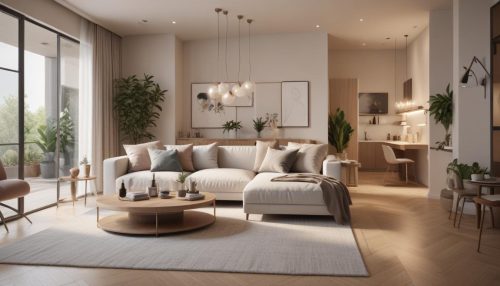Why Natural Light Matters for Focus
Emma Brooks July 14, 2025
In today’s digital environment, focus is under constant threat. Notifications, artificial lighting, and long indoor hours contribute to mental fatigue and declining productivity. But there’s a tool—often overlooked and entirely free—that can improve concentration and mental clarity across settings: natural light. Learning why natural light matters for focus isn’t just a design consideration—it’s a mental performance strategy backed by neuroscience, architecture, and lifestyle trends.
As people reimagine home offices, co-working spaces, and wellness-centered design, natural lighting is becoming essential, not optional. From circadian rhythm alignment to improved cognitive function, its influence is measurable and immediate.

The Science Behind Natural Light and Mental Focus
Our brains evolved under natural daylight. Today’s widespread reliance on artificial lighting, especially blue-rich LED sources, disrupts that natural pattern. The result? Poorer sleep quality, fragmented attention, and lower energy levels.
A 2014 study published in the Journal of Clinical Sleep Medicine found that office workers with access to natural daylight reported longer sleep, better quality rest, and higher levels of daytime focus compared to those without it The presence of natural light in a workspace wasn’t just aesthetically better—it directly improved alertness and cognitive stamina.
Why Natural Light Matters for Focus: Core Reasons
Here’s how natural lighting boosts focus in practical, biological, and emotional ways:
1. It Aligns with Circadian Rhythms
Natural light exposure helps regulate melatonin and cortisol cycles—two hormones critical for attention and wakefulness. Morning light, in particular, triggers the body’s “awake” signal, increasing alertness and reaction time.
When you spend more of your day exposed to daylight, your brain remains synchronized with natural energy highs and lows. This makes periods of intense work feel more sustainable and less forced.
2. It Reduces Eye Strain and Mental Fatigue
Artificial lighting—especially overhead fluorescents—can cause glare, eye fatigue, and tension headaches. Natural light, on the other hand, provides a full-spectrum, diffused illumination that reduces contrast strain and allows for easier visual processing.
In turn, this supports longer stretches of focused work without physical or cognitive discomfort.
3. It Supports Emotional Regulation
Focus isn’t just mechanical. Emotional state influences your ability to concentrate, and natural light has been shown to increase serotonin levels, boosting mood and reducing anxiety.
A brighter emotional state supports clearer thinking, better memory retrieval, and a more relaxed, problem-solving mindset.
The Trend: Light-Centric Design in Lifestyle and Workspaces
As hybrid work becomes the norm and well-being becomes a workplace priority, designers are prioritizing daylight like never before. Large windows, skylights, reflective surfaces, and indoor-outdoor transitions are now seen as core features—not extras.
Current trends reflecting this shift:
- Work-from-home redesigns with desks moved near windows
- Open-plan offices using glass walls and light wells to spread natural illumination
- Wellness-focused architecture including circadian-aware light planning
- “Sunrise simulators” and daylight therapy lamps for windowless spaces
The growing use of natural light in design isn’t just about aesthetics—it’s a functional tool for mental performance.
How to Maximize Natural Light for Better Focus
You don’t need a floor-to-ceiling window or a full renovation to benefit. Here’s how to leverage natural light—no matter the space.
1. Reposition Your Workspace
Move your desk near the largest available window. If multiple options exist, prioritize east-facing exposure in the morning and diffused southern light in the afternoon.
2. Use Reflective and Matte Surfaces
Mirrors, light-colored walls, and matte-finish furniture help spread and soften daylight, reducing harsh contrast and maximizing reach.
3. Keep Windows Clear
Avoid blocking windows with tall furniture, dark curtains, or overgrown indoor plants. Let the light in and consider using sheer panels to diffuse glare without eliminating brightness.
4. Take Intentional Light Breaks
If you work in a windowless or dim space, take short walks outside during breaks—especially in the morning. Even 10–15 minutes of direct sunlight can improve focus and reset your internal clock.
5. Layer Lighting with Daylight in Mind
Combine natural light with supportive artificial sources. Use indirect LED lighting that mimics daylight spectrum (5000K–6500K), especially in the absence of real windows.
Where Natural Light Falls Short—and What to Do About It
Not every space has the luxury of full daylight. If you work in a basement, interior office, or apartment with limited windows, here’s how to simulate or supplement it:
- Use full-spectrum “daylight” bulbs during work hours to mimic the brightness and warmth of natural sunlight.
- Install smart lighting systems that change temperature throughout the day to match natural cycles, providing gentle cues for focus or relaxation.
- Invest in light therapy lamps—particularly useful during winter months or early mornings—to support circadian rhythm and boost serotonin levels.
- Add plants, wood textures, and natural materials to simulate organic context, reduce visual fatigue, and encourage a calmer mental state.
- Keep artificial lighting indirect by using shaded fixtures and bouncing light off surfaces to avoid harsh glare and overstimulation.
While these methods aren’t identical to real sunlight, they can significantly reduce the cognitive load of poor lighting and help sustain attention, even in low-light environments.
What the Research Says (and Continues to Show)
The data supporting natural light’s role in cognitive performance continues to grow. Beyond the sleep-focused findings, other studies have confirmed its impact on attention and productivity:
- A Harvard Business Review survey found that access to natural light was the #1 attribute workers wanted in their workspace—even more than perks like fitness centers or cafeterias.
- Researchers from Northwestern University demonstrated that people working near windows scored significantly higher on focus and vitality measures than their window-deprived colleagues.
- In a study published in Ergonomics, employees with high daylight exposure were 18% more productive and made fewer errors on cognitive tasks.
Together, these findings reinforce why natural light matters for focus—not as a preference, but as a performance factor.
Final Thoughts
Focus is increasingly hard to find—but lighting can help. Understanding why natural light matters for focus gives us a non-digital, biologically-aligned method to improve concentration, reduce stress, and increase mental clarity throughout the day.
The good news? You don’t need a new building. You just need better access to what your brain was built for: natural light. It’s free, effective, and fully aligned with how you were meant to think.
References
- Boubekri, M., et al. (2014). Impact of Windows and Daylight Exposure on Overall Health and Sleep Quality of Office Workers. Journal of Clinical Sleep Medicine. https://jcsm.aasm.org
- Mardaljevic, J., et al. (2012). Daylight and Productivity – Linking Indoor Lighting with Work Performance. Ergonomics Journal. https://www.tandfonline.com
- DentLED – Benefits of Full-Spectrum Lighting: pmc.ncbi.nlm.nih.gov





